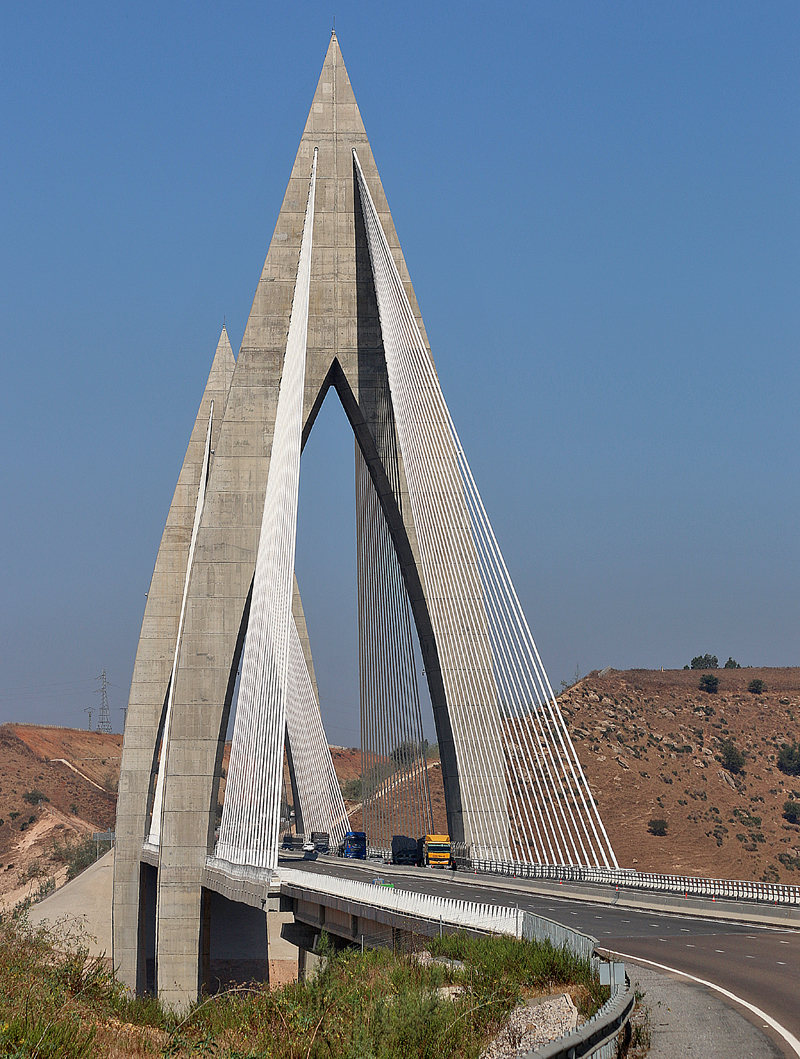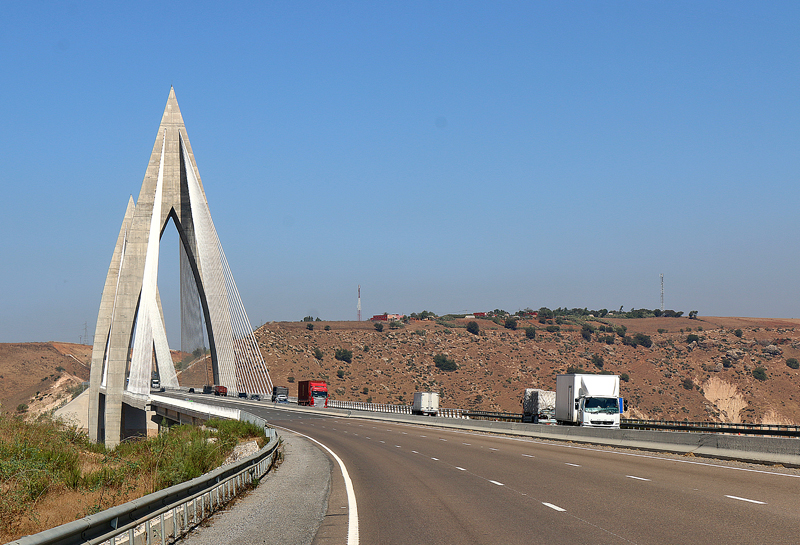As I was driving under a brilliant sun in a bright deep blue sky along the highways from Fez to Marrakech just east of the city of Rabat in Morocco, I crossed a bridge which I later found out that — at 950 meters in length with two arched towers which are 200 meters in height and symbolize the new doors to the cities of Rabat and Salé — it was the longest cable-stayed bridge in Africa until the John P. Magufuli Bridge opened in Tanzania on Thursday, June 19, 2025.
Mohammed VI Bridge in Morocco
Construction work was occurring on the bridge at the time I crossed it, leaving the three lanes heading southwest towards Casablanca closed; but they were in service again not far from the bridge. I took that as an opportunity to park the car and take some photographs.
A construction worker was approaching me — waving his arms for me not to park there — after I turned off the engine to the car. I motioned to him that I was simply stopping for a few minutes to take photographs of the bridge. After a moment or so, he let me know that I was okay where I was and walked back to working on the bridge.

The Mohammed VI Bridge was named after — and by — the current king of Morocco during an inauguration ceremony for the grand opening of the bridge on Thursday,
Rabat Grand Bypass motorway — which is a toll road that is approximately 41.5 kilometers or almost 25 miles in length — crosses the bridge over the Bou Regreg valley; serves the city of Tamesna; and is instrumental in connecting the cities of Rabat and Salé while:
- Simultaneously alleviating traffic
- Saving on fuel costs
- Reducing the emission of greenhouse gases and pollution
- Decreasing the number of motor vehicle accidents
- Saving motorists up to 30 percent in time over using the old road
- Improving traffic congestion in Hay Riad, which is the western residential suburb of the capitol city, and
- Generating economic benefits for the cities of Rabat and Salé
The cost of the construction was financed by the European Investment Bank and Autoroutes du Maroc — the latter of which predicts daily traffic of 50,000 vehicles on the bypass.
The deck of the bridge is supported with 160 cables — comprised of two sets of 20 pairs of parallel multi-strand stay cables — and is illuminated at night with a lighting system which is capable of displaying up to 16 million colors. Lighting the bridge is 75 percent more efficient with the use of light-emitting diode technology when compared to using conventional light bulbs.
The bypass is part of the road plan 2035 of Morocco, whose goal is to build new roads and improve current ones over the course of the next 25 years, with isolated rural areas among the biggest beneficiaries.
Final Boarding Call
When I was finished photographing the bridge, I waved to the construction worker, indicating my way of thanking him — and he came over wanting cigarettes from me. Since I do not smoke, I had no cigarettes to give him — to his disappointment — so I continued on my way to Marrakech.
All photographs ©2018 by Brian Cohen.

